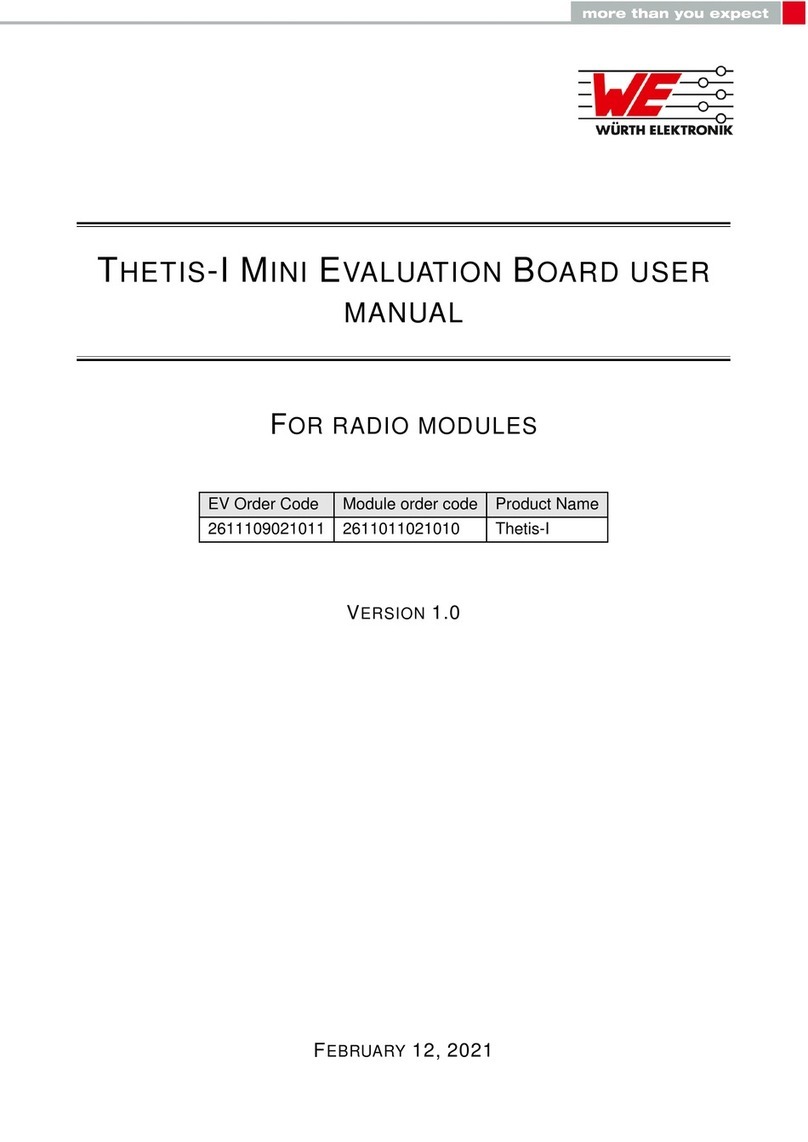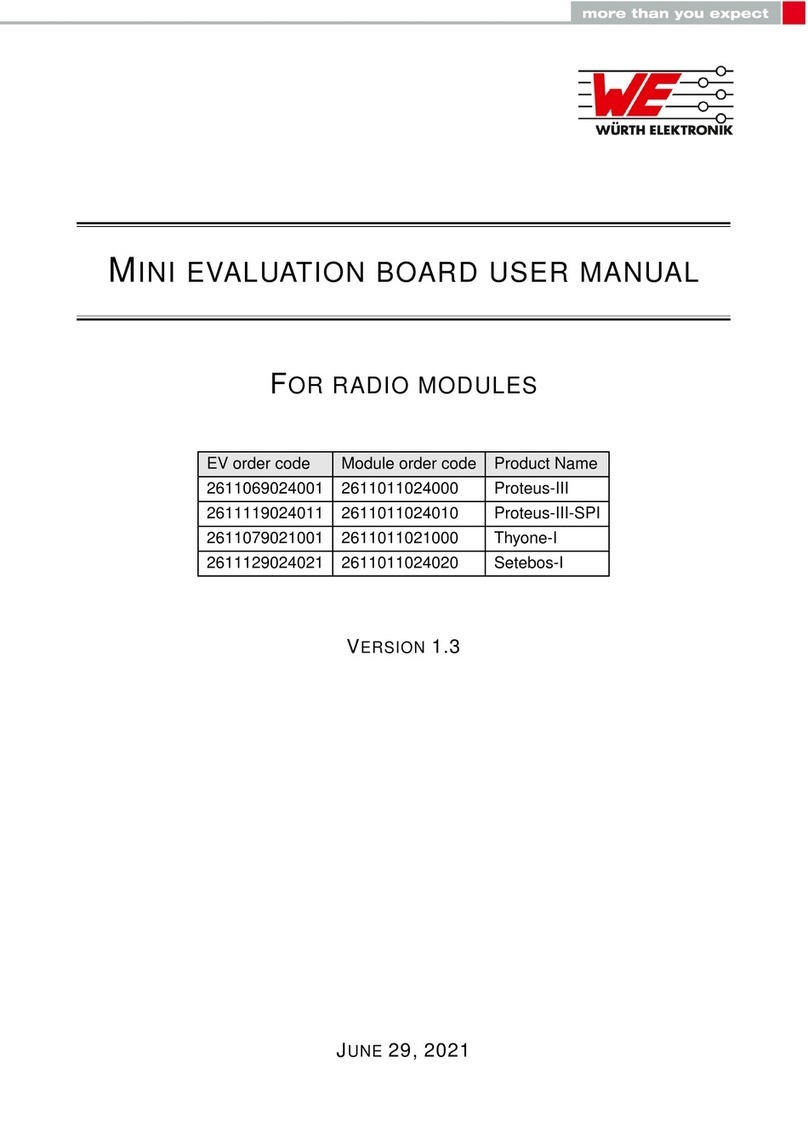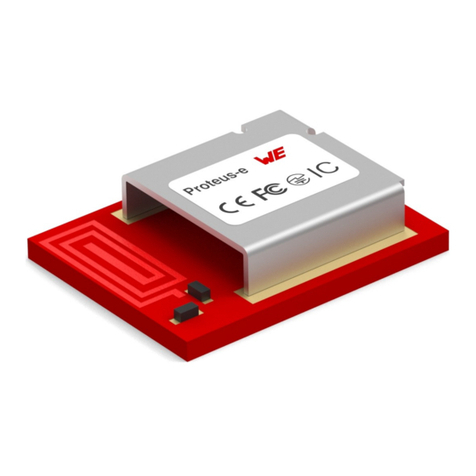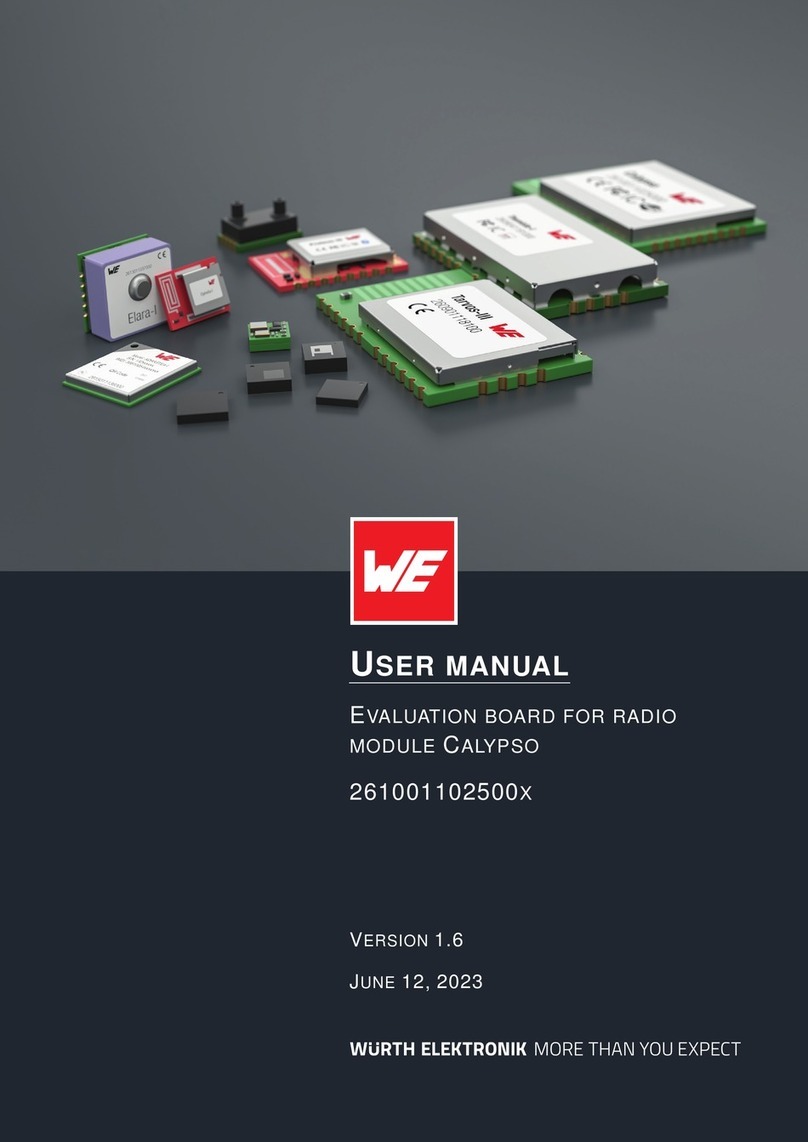
WIRELESS CONNECTIVITY & SENSORS
Family evaluation board user manual
Contents
1 Supported radio modules 5
2 Functional description 7
2.1 Taking into operation - PC . . . . . . . . . . . . . . . . . . . . . . . . . . . . . . 7
2.2 Taking into operation - Host controller . . . . . . . . . . . . . . . . . . . . . . . 8
3 Development board 9
3.1 Blockdiagram..................................... 9
3.2 Additionalassembly ................................. 10
3.3 Connectorsandports ................................ 12
3.3.1 P1: Module communication access pins / TTL-232R-3V3 FTDI cable
connector .................................. 13
3.3.1.1 Proteus-I, Proteus-II . . . . . . . . . . . . . . . . . . . . . . . . . . 13
3.3.1.2 Proteus-III, Proteus-III SPI, Setebos-I, Thyone-I . . . . . . . . . . . 14
3.3.2 P2: Power supply / Current Measurement . . . . . . . . . . . . . . . . 15
3.3.3 P3: Module debug access pins . . . . . . . . . . . . . . . . . . . . . . 15
3.3.4 P4: Module GPIO access pins . . . . . . . . . . . . . . . . . . . . . . . 16
3.3.4.1 Proteus-I, Proteus-II . . . . . . . . . . . . . . . . . . . . . . . . . . 16
3.3.4.2 Proteus-III, Proteus-III-SPI, Setebos-I, Thyone-I . . . . . . . . . . . 17
3.3.5 CON2: Debugging Interface-2x10 pin header . . . . . . . . . . . . . . 17
3.3.6 SMA ..................................... 18
3.3.6.1 Proteus-I/-II............................... 18
3.3.6.2 Smartantenna ............................. 18
3.4 Jumpers........................................ 20
3.4.1 Current measurement . . . . . . . . . . . . . . . . . . . . . . . . . . . 21
3.4.2 Setebos-I functions . . . . . . . . . . . . . . . . . . . . . . . . . . . . . 21
3.4.3 Bootmode.................................. 22
3.5 Resetbutton ..................................... 23
3.6 Functionblocks.................................... 24
3.6.1 Powersupply ................................ 24
3.6.1.1 Pin header P1, power supply through TTL-232R-3V3 . . . . . . . . 24
3.6.1.2 Pin header P1, power supply through external source . . . . . . . 24
3.6.1.3 Pin header P2, power supply through external source . . . . . . . 24
3.6.2 UART/USB................................. 25
3.6.3 UARTdirect ................................. 25
3.6.4 SPIdirect .................................. 25
3.6.5 LFXOcrystal ................................ 25
3.6.6 Programming interface . . . . . . . . . . . . . . . . . . . . . . . . . . . 29
3.6.7 LEDs..................................... 29
3.6.7.1 Proteus-I, Proteus-II, Proteus-III, Proteus-III-SPI, Thyone-I, Setebos-
I ..................................... 29
3.7 Schematic - Proteus-III, Proteus-III-SPI, Thyone-I, Setebos-I . . . . . . . . . . . 30
3.8 Schematic -Proteus-I, Proteus-II . . . . . . . . . . . . . . . . . . . . . . . . . . 32
3.9 Layout......................................... 34
3.10 Billofmaterials.................................... 36
Proteus-I,-II,-III,-III-SPI, Setebos-I, Thyone-I 3
Version 1.0, September 2022 www.we-online.com/wcs



































